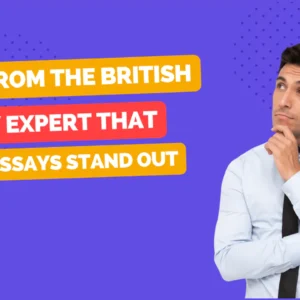Training strategies refer to the methods teachers use to teach effectively. Such strategies aim to increase students’ involvement in the learning process. Properly organized instructional strategies help students achieve their learning goals. In general, teachers use different teaching strategies based on what kind of students they are dealing with. Such strategies differ within an institute, depending on students’ calibre and intellectual level (Wegner et al., 2013). The success of the teaching strategies is governed by many micro and macro factors. Effective teaching training includes using different strategies to attain good academic learning outcomes. The instructional strategies guide helps instructors and researchers of academic papers understand complete knowledge about various teaching styles.
In other words, it is a way for teachers to engage students in their courses and practice various skills. Teachers can choose different teaching strategies based on class level, strength, size, and resources. Various teaching strategies are used to achieve teaching and learning objectives. In general, teachers who support students by adopting combinations of different teaching approaches have better productivity in terms of students’ academic outcomes. For example, an excellent tutor may choose a strategy that works for English-speaking students, students having learning difficulties due to physical or mental disabilities, and depending on the student’s learning needs.
Teachers can also choose students’ activities in the classroom, depending on the teaching method, such as strategies for tracking the use of different techniques. You can also use specialized skills to teach specific strategies, such as problem-solving strategies. Activities that promote thinking and discussions with current groups, such as thought-sharing activities, are suitable for collaborative learning, but activities that motivate students to act require an active learning system. A few instructional strategies employed by most tutors are as follows:
Differentiated Instruction:
This allows teachers to adapt courses to the academic level in the classroom. At the same time, it promotes promotion. Teachers assess students and apply assessment techniques to ensure that classroom instruction is consistent with their skills and abilities.
Active Learning:
To encourage student participation in the learning process, active learning involves project-based and exploratory learning elements so students can follow their learning paths. Active learning activities include a pair and partnership strategy and a learning environment.
Integrated Learning:
Through integrated learning, students can be part of their learning in a free digital environment and be part of one class after another (Djenic and Mitic, 2017). These technologies include a combination of two institutions to create a learning experience that allows students to expand their learning into their own time and interact with individuals to incorporate what they have learned. In addition, effective learning strategies of teachers surely introduce a student to the world of innovation.
Corporative Learning:
In classes, collaborative study groups allow students to develop communication and work together opportunities in small units. Teachers can form strategic groups around students with different skill levels and teaching methods to develop collaboration, communication, and social skills.
Project Development Learning:
Project development-based learning is an instructional innovation allowing students to quickly understand a topic. Such innovative strategies help teachers incorporate better video, website, or bookmaking skills in a group of students.
Question-based Learning:
In childhood, everyone plays WHY and HOW games. Asking frequent questions is key to understanding. Similarly, question-based learning helps the teacher to cultivate good conceptual understanding in students. Students reflect on key questions they need to understand and gather information, make assumptions, participate in activities, and respond in an open environment.
Flipped Classrooms:
Flipped Classes are changing traditional teaching strategies. In modern classrooms, students are instructed before class to spend time on problem-solving, individual feedback, and student collaboration (Soliman, 2017). Returning to the classroom, students can progress more effectively, prepare for the lesson earlier, and receive more targeted support and feedback from teachers and colleagues.
Elaboration Learning:
All learning and knowledge acquisition processes aim to integrate new knowledge into an existing cognitive structure. For example, elaboration techniques promote understanding and preservation of new knowledge by creating links between new and existing knowledge. In general, they are used when students invent analogies and mnemonics to learn facts, relate new ideas to their previous knowledge, or express new information in their own words.
Emotional and Motivational Learning:
Student motivation is often seen as the key to success. However, other factors such as knowledge, experience and interest also play a role. Motivation is an instruction to work for a purpose considered positive instruction. In school, these concepts mean for how long the continuation of the stimulus affects the student as a whole and, consequently, for how long.
School is often referred to as the primary place of learning. So, of course, the school should be the place to be. Students learn how to learn and thus master successful learning strategies. However, its acquisition has aligned with school education – it has not yet been optimized for further development. School education focuses on the former in the conflict between knowledge transfer and students’ developmental competence (Breitwieser and Brod, 2021). CEO of a cheap dissertation writing service said that if teaching strategies and methods are essential for certification, they should also be systematically developed to organize a repertoire of strategies for students.
Hence, Educational strategies include all the teacher’s learning methods to help students learn or better understand the program. They allow teachers to make the learning experience more comfortable and encourage students to participate more actively in their education. Therefore, teachers must consider this topic and teach it to their students immediately. The repeated use of this technique will allow students to become good users of the strategy and choose one as per their objectives.
References:
- Wegner, C., Minnaert, L. and Strehlke, F., 2013. The Importance of Learning Strategies and How the Project” Kolumbus-Kids” Promotes Them Successfully. European Journal of Science and Mathematics Education, 1(3), pp.137-143.
- Breitwieser, J. and Brod, G., 2021. Cognitive prerequisites for generative learning: Some learning strategies are more effective than others. Child Development, 92(1), pp.258-272
- Soliman, A.M., 2017. Appropriate teaching and learning strategies for the architectural design process in pedagogic design studios. Frontiers of architectural research, 6(2), pp.204-217.
- Djenic, S. and Mitic, J., 2017. Teaching Strategies and Methods in Modern Environments for Learning of Programming. International Association for Development of the Information Society.


